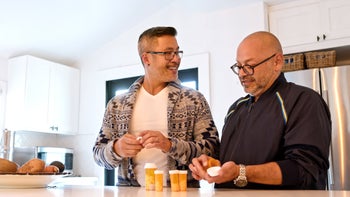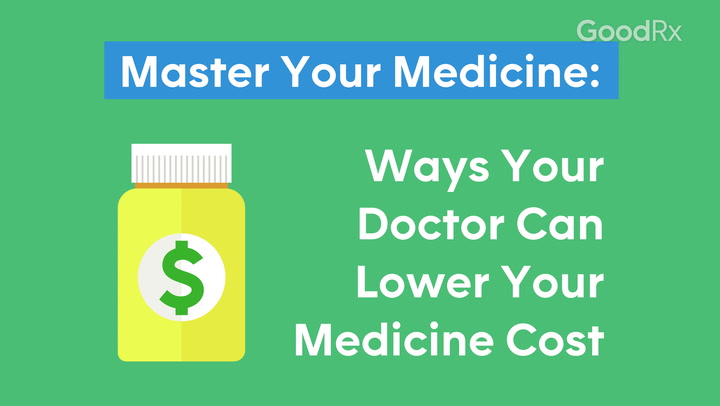
Pharmacy Services Explained: A Guide for Healthcare Providers
Key takeaways:
For decades, community pharmacists have been offering direct-care services to help people make the most of their medication regimen.
Direct-care services offered by community pharmacists include vaccinations, medication therapy management, adherence solutions, and pharmacogenomics.
While reimbursement for direct-care services vary, it is widely available for vaccinations and medication therapy management.

Community pharmacy has long been transitioning away from the traditional medication-dispensing-only model to provide non-dispensing services that can play a significant role in patient outcomes.
The number of community pharmacies offering these non-dispensing services continues to grow, and, so, it’s a good idea for providers to understand how to take full advantage of a pharmacist’s education and training to help their patients receive the best care possible.
Here, we’ll look at community pharmacy services that go beyond dispensing and how people can take full advantage of them.
Instant Rx savings for insured and uninsured patients
GoodRx for HCPs has savings that can beat insurance copays and reduce your need to complete prior authorizations.

GoodRx is NOT insurance. GoodRx Health information and resources are reviewed by our editorial staff with medical and healthcare policy and pricing experience. See our editorial policy for more detail. We also provide access to services offered by GoodRx and our partners when we think these services might be useful to our visitors. We may receive compensation when a user decides to leverage these services, but making them available does not influence the medical content our editorial staff provides.
Vaccinations
Washington state began the first U.S. training program for pharmacist-administered vaccines in 1994, and 2 years later, in 1996, the American Pharmacists Association launched a national training program. Since then, authority to give vaccines has been expanded to all 50 states, with Maine being the last state to enact legislation giving the authority to pharmacists, in 2009.
Community pharmacies are now one of the most common places to receive a vaccine. In fact, most recent CDC data shows that 39% of flu shots were given in a community pharmacy in the 2020-21 flu season. It was the most common place to receive the flu shot — ahead of a doctor’s office, the workplace, and hospitals.
Many states allow pharmacists to give any vaccine, and other states allow the dispensing of any vaccine recommended by the CDC or ACIP. Only a few states — including North Carolina, West Virginia, and New York — restrict pharmacist-administered vaccines to a specific list.
Pharmacy technicians are also able to give vaccines. Idaho became the first state to do so, in 2017, and the COVID-19 pandemic accelerated the expansion of technician-administered vaccinations.
The Secretary of the Department of Health and Human Services issued a declaration under the PREP Act allowing pharmacy technicians and interns to give vaccines in all 50 U.S. states. Because this preempts any state restrictions, pharmacy technicians are now allowed to give vaccines in every state.
How can people get this service?
Vaccines are perhaps the easiest community pharmacy service on this list to get, because the majority of community pharmacies offer vaccines. In fact, as of 2018, the most recent data available, 86% of community pharmacies provided vaccine administration. Most pharmacies did not require appointments.
Pharmacists are typically required to fax a notification to the patient’s provider and also report to the state immunization registry so there will be documentation. It’s important, though, that people tell the pharmacy who their primary provider is, to ensure the notification is faxed to the correct office. Many pharmacy systems fax this notice automatically, based on who is listed as the person’s primary provider.
Medication therapy management
According to the American Pharmacists Association, medication therapy management (MTM) is defined as “a distinct service or group of services that optimize therapeutic outcomes for individual patients.”
There are five core elements of an MTM session:
Medication therapy review: A pharmacist collects information on a person’s medications and health conditions to identify medication-related problems.
Personal medication record: A comprehensive record of all medications, including OTCs, supplements, and herbals, is created.
Medication-related action plan: Actions or changed behaviors for the person to take, based on the conversation with the pharmacist. Examples include taking a medication in the morning instead of evening because of side effects or rinsing their mouth out after using a steroid inhaler.
Intervention and/or referral: When necessary, the pharmacist intervenes to address medication-related problems. This could mean referring to their provider or sending recommendations to their provider.
Documentation and follow-up: Standardized documentation is included and, if needed, a follow-up appointment is scheduled.
MTM has been shown to improve medication adherence, improve blood pressure, lower low-density lipoproteins (LDL) and A1C, decrease the total number of medications prescribed, and reduce therapeutic duplication. MTM also has demonstrated good return on investment, with every $1 spent leading to $1.29 in healthcare cost savings.
How can my patients get this service?
Every Medicare Part D plan is required to have an MTM program. Plans might either hire their own employees or contract with pharmacies to conduct MTM sessions on their behalf.
Some Medicaid plans also offer either full MTM services or at least some components of it. Tricare conducted a pilot study of MTM services in 2019, but it is not currently listed as a covered service. Commercial plans might also offer the service — at least to selected high-risk patients.
Finally, if the service is not covered, patients might still be able to pay cash for medication therapy management. City Drug, for example — in Presque Isle, Maine — offers MTM services at a cash price of $60 for the first 30 minutes and $30 for each additional 15-minute increment.
Medication synchronization
Medication synchronization is a service where the pharmacy aligns all of a person’s refills on the same day of the month. It saves the person trips to the pharmacy and keeps them from having to call in multiple refills throughout the month. Instead, the pharmacy staff might call the person before their appointment date and confirm all their scheduled medications. The person will then have an opportunity to request any as-needed medications.
Multiple studies have demonstrated improved adherence with medication synchronization, including a recent meta-analysis, which showed it to double the odds of adherence.
How can people get this service?
Medication synchronization is becoming more commonplace and is now offered by 79% of independent pharmacies. Many chain pharmacies offer this service, as well.
It is important for patients to understand, however, that while pharmacies don’t usually charge a fee to provide medication therapy management, insurance does not always cover the early refills required to align their medications. If a medication is too early to fill but the patient needs a small amount to get them to their refill date, then they might be required to pay cash. For this reason, pharmacies will often try to find an appointment date that is centered around a more expensive, branded medication.
There are also times when a pharmacy might be able to reduce the number of visits to the pharmacy but the person might still need to come in more than once per month. This often happens when the person is on a controlled substance. Providers can help with this by working with the pharmacy to provide additional prescriptions for a short-filled controlled substance so it can be aligned to a person’s refill date.
Adherence packaging
Community pharmacies have gone beyond the traditional dispensing of medications and now offer a wide range of services to help people stay on their medications.
Adherence packaging is also offered by many pharmacies and is a service where medications are packaged into blister packs or strips rather than bottles. It is also common for the person’s medications to be packaged according to day rather than by medication.
While outcome data on adherence packaging is limited, a recent survey conducted at an independent pharmacy shows promising results.
How can my patients get this service?
Blister packaging and strip packaging are more common with mail-order pharmacies. However, many independent pharmacies, like Moose Pharmacy in North Carolina, offer this service, often to help differentiate themselves from the chains, which do not commonly offer this service.
Even if a pharmacy doesn’t currently offer this service, they might be willing to add it — especially if they know a provider or people are interested. Independents can often move quickly to add services because the owner can be the sole decision-maker, so it makes sense to start by calling a local independent pharmacy.
Pharmacogenomics
Pharmacogenomics is the study of how genes affect a person’s response to drugs. While it might be new to the community pharmacy setting, the field is not new, and, in fact, the FDA has approved a long list of drugs that require or recommend genetic testing as part of their prescribing.
For example, the package label for irinotecan, approved in 1996, discusses the increased risk for neutropenia in patients homozygous for UGT1A1*28. Abacavir is another well-known example, with patients with the HLA-B*5701 allele being at high risk for a hypersensitivity reaction.
With this service, pharmacies will usually partner with a lab. The pharmacy will collect the sample and can also help the provider interpret the results.
How can my patients get this service?
Coverage for genetic testing varies significantly based on insurance plan, the type of test being ordered, and coverage considerations. It is, however, sometimes covered by insurance. For example, United Healthcare has a plan that covers genetic testing to help guide selection of antidepressant and antipsychotic medications, when the patient meets other criteria. For patients who are uninsured or underinsured, cost can be as high as $2,000.
Pharmacogenomics is also not yet available at most community pharmacies. However, there are companies that focus specifically on pharmacogenomics and community pharmacists who have started their own genomics practices. Here again, independent pharmacies will most likely be quicker to adopt the service, and, again, Moose Pharmacy is an example of an independent community pharmacy already providing this service.
In the outpatient setting, pharmacogenomics is often provided through an MTM session. As part of the medication review session, a pharmacist will review not only a person’s medications but also review the results of their genetic test and make recommendations based on those results. MTM software that includes a genomics clinical-decision support system is available and becoming increasingly common.
Finally, EHR systems are beginning to incorporate clinical decision support for pharmacogenomics so health-system providers and pharmacists can integrate that information into the care of hospitalized people.
In the future, it is very likely that pharmacogenomics will become not a separate field but an integral part of care. It’s likely that in the same way providers and pharmacists screen for dosing and drug interactions, they will also screen for any drug-genome concerns before making decisions.
The bottom line
Community pharmacies have long looked beyond medication dispensing to providing more direct-care services, and today’s community pharmacies are central to ensuring people get the most out of their medications. Medication therapy management, vaccinations, pharmacogenomics, and adherence solutions are just a few of the ways community pharmacists can play a key role in keeping people healthy.
Why trust our experts?


























